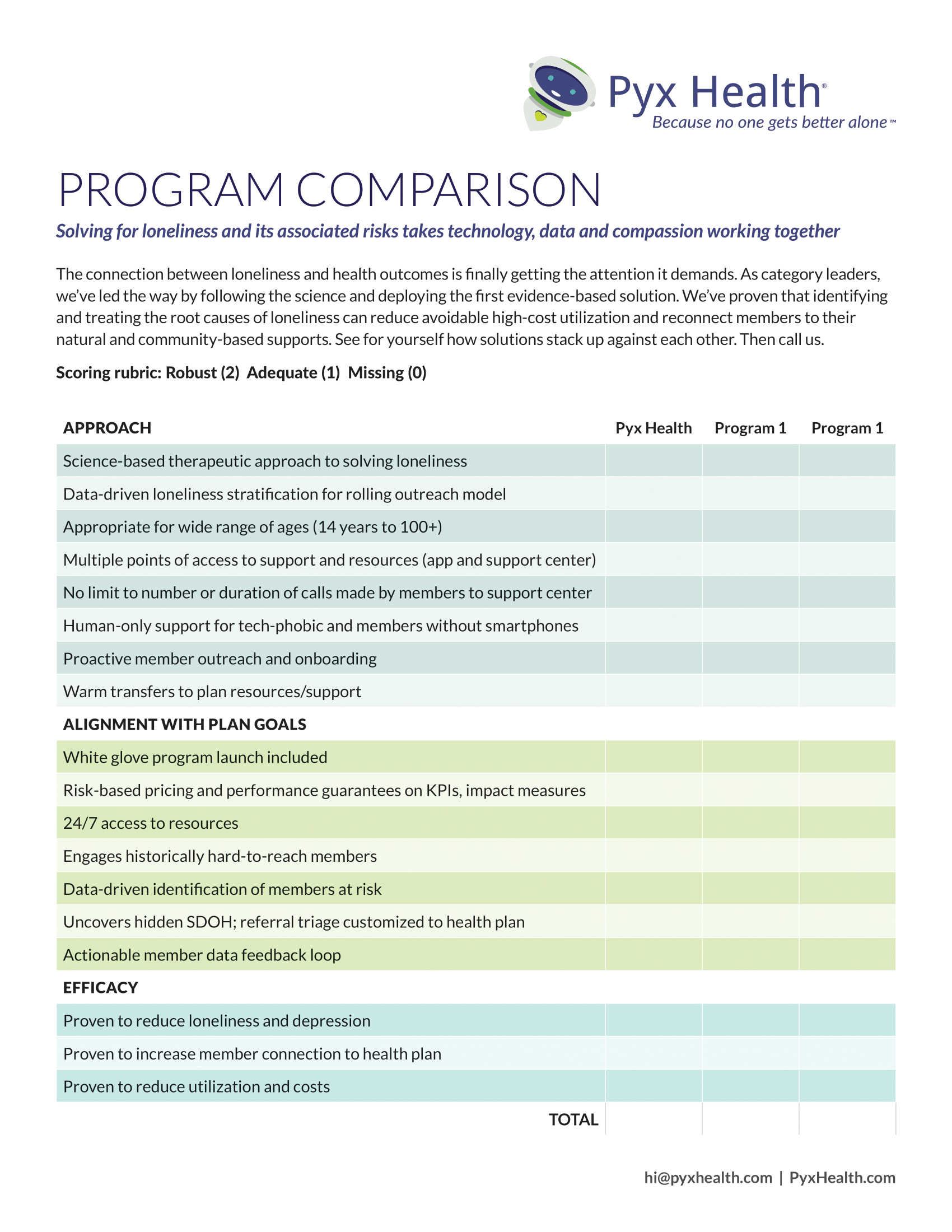The pursuit of better member engagement lies in identifying a solution that solves what many consider unsolvable. How do you engage members so that they take an active role in their health? If you can increase engagement, both you and your members will benefit. They will have better outcomes and possibly a better quality of life, and you can reduce service utilization by those members.
So what is this core component that can significantly impact engagement? Medicare and Medicaid plans have had an epiphany, realizing loneliness could be that core factor.
Loneliness is a devastating and pervasive problem. It’s not just a feeling or consequence of isolation. However, you may not know that loneliness negatively impacts your member engagement strategy.
As a health condition, loneliness requires treatment with evidence-based programs that holistically address member needs. If you can identify loneliness and reduce it, you may achieve greater engagement with your members.
The impact of loneliness
Experts have classified loneliness as a public health emergency. More research connects it to adverse outcomes. It’s a high-risk factor for mortality, and lonely people are at higher risk for heart disease, chronic inflammation, dementia and other health conditions.
Loneliness also costs the U.S. health care system nearly $7 billion annually, mostly related to unnecessary emergency department (ED) visits, avoidable hospitalizations, readmissions and other overutilization.
Because loneliness plays a defining role in your members’ health, you’ll need to devise strategies to prioritize it. To do this, you will need a member engagement solution that confronts loneliness from a scientific, technological and human angle.
When formulating your loneliness plan, you’ll want to evaluate several aspects before deciding. The following questions will help you build a checklist:






